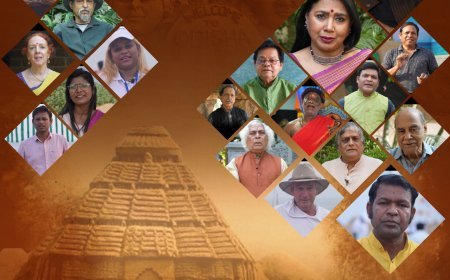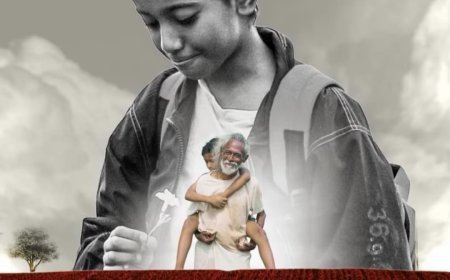Bihar 2025: NDA's Resounding Victory Exposes Cracks in India's Democratic Facade

November 19, 2025
As dawn broke over the fog-shrouded fields of Bihar on November 18, 2025, the state stirred to the echoes of an electoral earthquake. The National Democratic Alliance (NDA), spearheaded by the Bharatiya Janata Party (BJP) and its long-time ally Chief Minister Nitish Kumar's Janata Dal (United), had clinched a staggering victory, securing over 200 seats in the 243-member Legislative Assembly. This near-90% strike rate defied pre-poll predictions of a razor-thin majority or even a hung house, painting a picture of unbridled dominance in a state long synonymous with political volatility.
For the uninitiated, Bihar's assembly polls—held in five phases from October 20 to November 7—were billed as a referendum on governance. Yet, the NDA's triumph arrived not on the wings of substantive progress in economy, jobs, education, health, or law and order, but through a masterful orchestration of extra-constitutional levers. This outcome, while stunning, was perhaps inevitable in a landscape where electoral battles are increasingly waged not just on ballots, but on the battlefields of institutional capture, targeted populism, and narrative warfare.
The Alchemy of Victory: Beyond Ballot Boxes
At the heart of the NDA's sweep lay a cocktail of strategies that transcended traditional vote banks. First, the Election Commission of India (ECI) found itself at the epicenter of controversy. Accusations of bias peaked with the ECI's Special Investigation Review (SIR) of voter lists, which opposition leaders decried as a thinly veiled purge targeting minority and marginalized communities. Reports from independent observers, including the Association for Democratic Reforms, highlighted discrepancies in voter deletions—over 2.5 million names struck off in NDA strongholds—fueling cries of "vote chori" (vote theft) from the INDIA bloc.
Compounding this was the NDA's unabashed weaponization of welfare. Post-poll schedule, Nitish Kumar's government disbursed Rs. 10,000 directly to over 1.2 crore women beneficiaries under the Mukhyamantri Mahila Samanvit Yojana, a move ruled illegal by the Supreme Court yet unchallenged in time for voting day. This "money and mahila" gambit—cash transfers laced with promises of employment-linked incentives—resonated deeply in a state where women's economic vulnerability remains acute. Female turnout surged to a record 68.5%, up from 59% in 2020, with exit polls from CSDS-Lokniti attributing 15-20% of the NDA's margin to this demographic shift.
Caste coalitions, ever the bedrock of Bihar's politics, held firm but with a twist. The NDA's "jungle raj" redux—evoking the lawlessness of Lalu Prasad Yadav's 1990s era—stoked fears among upper and backward castes, while Nitish's late-hour reconciliation with the BJP after a brief flirtation with the opposition elicited a sympathy wave. A last-minute assassination attempt on Nitish Kumar in Patna, widely suspected to be staged but never proven, amplified this narrative, turning the septuagenarian leader into a symbol of resilience.
Underpinning it all was the BJP's electoral juggernaut, masterminded by Home Minister Amit Shah. His vote management—leveraging micro-targeting via the party's vast IT cell, booth-level worker mobilization, and even whispers of central agency intimidation—ensured a turnout efficiency that the opposition could only envy. The result? The BJP alone bagged 142 seats, Nitish's JD(U) 58, and smaller allies the rest, leaving the INDIA alliance—comprising Congress, RJD, and Left parties—reeling at under 40 seats.
Women: The Silent Architects of Change
No analysis of Bihar 2025 is complete without centering women voters, whose decade-long ascent has redrawn the electoral map. Since the 2015 polls, their participation has climbed steadily, driven by schemes like the 50% reservation in local bodies and direct benefit transfers. In 2025, parties across the spectrum wooed them aggressively: the NDA with cash and safety nets, the RJD with promises of prohibition rollback and gender quotas in jobs.
Media analyses, from The Wire's deep dives to NDTV's voter profiles, underscore how this "pink vote" tipped scales in 80+ constituencies. In rural pockets like Madhubani and Siwan, women cited the Rs. 1,000 monthly stipend as a lifeline amid soaring inflation, overriding concerns over unemployment (Bihar's rate hovers at 7.5%, per NSSO data). Yet, this empowerment comes with caveats—critics argue it's transactional, binding voters to patronage rather than accountability.
The Opposition's Reckoning: From Slogans to Strategy Void
The INDIA bloc's rout was as predictable as it was poignant. Running on "Nyay Yatra" echoes and pie-in-the-sky pledges—one government job per family, farm loan waivers—the coalition failed to counter the NDA's machine. Congress, securing a dismal 12 seats, epitomized this inertia: its campaign, mired in high-command paralysis, ignored ground realities like ECI malfeasance or the NDA's welfare blitz.
RJD's Tejashwi Yadav mounted a spirited youth outreach, but fragmented alliances and internal bickering diluted its edge. The opposition's "vote chori" refrain, while resonant on social media, lacked forensic evidence or legal teeth, dissolving into post-poll lamentations.
Intellectual Blind Spots: A Deeper Democratic Malaise
Perhaps the most damning indictment lies not with politicians, but with the chattering class. Public intellectuals, from op-ed stalwarts in The Hindu to YouTube pundits, peddled familiar tropes: anti-incumbency mirages, caste calculus, and "Modi wave" variants. Rarely did they dissect the rot—the ECI's erosion under pressure, the judiciary's selective interventions, or the media's complicity as a BJP echo chamber.
This myopia stems from a refusal to acknowledge India's democratic mutation: from electoral pluralism to majoritarian consolidation. The NDA's win isn't an aberration but a symptom of safeguards crumbling—think Article 370's abrogation, farm laws' steamrolling, or the weaponized Enforcement Directorate. Bihar 2025 signals that without institutional revival, such "mandates" risk becoming mere majorities, hollowing out the republic's soul.
As Nitish Kumar prepares for his ninth term, Bihar stares at continuity: promises of "Viksit Bihar" amid persistent poverty (46% multidimensional, per NITI Aayog). The real test? Whether this victory spurs reform or entrenches the playbook of 2025. For now, the Ganges flows on, indifferent to the tides of power that ebb and surge upon its banks.
Sanjay Pattnayak
Sundargarh










































